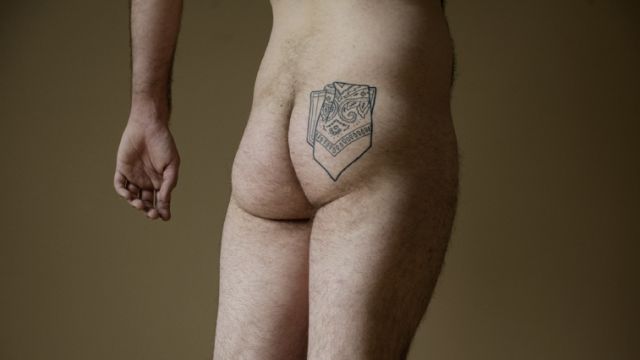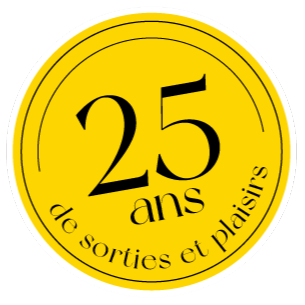From hanky tattoos to HIV disclosures, artist Vincent Chevalier cracks the queer codes
Auteur: Mark Ambrose Harris
In discussion with artist Vincent Chevalier, it’s clear that codes are high up on his list of interests. From visual cues in the queer community, to the language of code that fuels the internet, Chevalier is fascinated by how these symbols intertwine, both online and in the flesh. Living and working in Montreal, his practice frequently touches on the act of disclosure, and teasing out the nuances of quotidian actions. Some of his pieces employ music, such as COVER, a video that offers an alternate cover of PJ Harvey’s Rid of Me, or Me, You, Lisa, I, a single take where Chevalier acts out the entirety of Lisa Loeb’s 1994 album Tails. And if you think that takes endurance, consider Chevalier’s performance The Red Carpet Treatment. Toying with how celebrity culture is generated, the artist traveled from his home in Verdun all the way to the Quartier des Spectacles by placing a two-meter length of red carpet on the sidewalk, walking said length, and then re-placing the carpet in front of him. He performed similar walks in Kitchener, Ontario, and Kuopio, Finland.
Now, Chevalier is preparing for an artists’ residency in Banff. We spoke about what he plans to do out west, the politics of disclosure, and the hanky code.

Photo: David J. Romero
What will the residency in Banff entail?
I’m going to the Banff Centre to participate in a visual arts residency directed by West Coast artist Ken Lum. The project that I proposed is called Hyperflesh Markup Language (hfml) and is based on my increasing interest/involvement in queer social and visual culture online. The title plays around with the term "hypertext markup language" i.e., the coding language used to build the web. I’m fascinated with the idea of queer experience being coded through visual and cultural signifiers, and I think that there are interesting links to be made between these and the coded space of the Internet. I think queer cultural production is particularly adept at using the Internet to disseminate/replicate/create itself. I’m also interested in the ways that queer experience, both online and offline, is mediated through the internet. This means everything from coming out through social media and finding community with other like-minded queers, to using the Internet to hook up or watch porn. For Hyperflesh Markup Language―named after my tumblr blog―I'll be making art works that examine the space where the body, identity, and the Internet intersect.
You once had a piece up at Concordia that was a text-based score instructing people to wait/disclose. Is there any documentation of this?
The score is as follows:
wait for an appropriate moment
disclose your hiv status
wait
This work is not up on my website. Much to my chagrin, I was still at that weird point in an artist's career where they haven't learned to document the crap out of everything they do, especially the ephemeral stuff. However, the score is very much present in all of my work. It serves as the basis for my artistic practice as organized around the performative qualities of disclosure. There’s a type of rhythm to the direction, wait/disclose/wait : space/action/space, which manifests in many of my works. This is sometimes experienced literally, like in the action of my red carpet walk: place carpet, walk, place carpet. But it’s also evident when the viewer interacts with me and my work. The space between myself and those around me is constantly shifting with the information of me being queer or HIV-positive being disclosed. I perform this score constantly. My works are an attempt to not only make this evident, but also to implicate the viewer/others into the process. I like to think of them as a gesture of disclosure, the piece of information, feeling, or action that shifts the situation and produces a circuit of exchange between me and you.
You’ve had some intense reactions to The Red Carpet Treatment. What was the “reason” behind these violent reactions?
Basically, I arrived in Kitchener around 2 PM and by 6 PM I was threatened by a really aggressive guy who called me a faggot and invaded my personal space, coming right up to my face and screaming. I was also called names by a motorist who was pissed off that I was taking too long to cross a street. The Red Carpet Treatment is interesting because it marks me as visible and conspicuous within public space. Being white and cis-masculine, I’m aware of the privilege that allows me to pass through the city without being noticed. The red carpet also carves out an exclusive space for me on the sidewalk while I’m performing. I’m very aware of the space I occupy and try to allow people the freedom of movement they need. Nevertheless, some people feel threatened by my presence, largely because I’m doing something that is very out of the ordinary. It was hard as a queer person doing this action in a town where I felt slightly isolated and cut off from my usual support networks.
Can you talk a bit about your hanky tattoo?
As I mentioned above, I find the coded nature of queer experience to be exciting. One of its most obvious examples is the hanky code, which is a visual system of communication developed as part of gay male public sex culture of the 1970s in San Francisco and NYC―although it has its roots all the way to the homosocial environments of gold-mining camps of California in the 1850s. Today, it has been adopted by queer individuals more broadly and is often referenced as a way to engage with a history/lived present of public sex culture. While cruising, an individual is able to "flag" their preference for their desired sexual encounter by wearing a coloured hanky on the right or left side of their body. Right is bottom, left is top. The colour advertises what type of sex the individual wants, for example, blue meaning anal sex, grey meaning bondage, or yellow meaning watersports. My tattoo, entitled, Blank Hanky, Bottom Right, takes the symbol of the hanky and fixes it on my right butt cheek, marking me as the bottom partner―for the record I'm very much a switch these days. However, the tattoo is left uncoloured or "blank," setting up the invitation for play between myself and a sexual partner(s). As the bottom, I get to be coloured in by the other person. This is an interesting space of active submission, in that I have had the tattoo placed somewhere that I couldn't colour in myself. I’ve yet to have an actual encounter where someone has wanted to colour in my hanky and then perform the fetish. It has remained a theoretical gesture.

Photo: Pekka Mäkinen (2009 ANTI Festival)
I know you have your reservations with the term "performance artist." Care to elaborate?
When people think about performance, there is a tendency to imagine something close to theatre, spoken word, cabaret, or dance. While these are all valid and important methods of performance, and all things I have done in the past, most of my work is not enacted in this way. Therefore, when people describe me as a performance artist, I’m always aware that certain mythologies and preconceptions of performance art shape their ideas of the type of work that I do. I would prefer to leave my practice open to a broader interpretation of performance that is based in actions. I think one of the worst misinterpretations of my work was when I described a piece as "gesture-based" and the writer misunderstood "gesture" as "jester" and thought that I was making a clown piece about being HIV-positive. Hilarious and horrifying indeed.
Help send Hyperflesh Markup Language to Banff | indiegogo.com
vincentchevalier.ca | hfml.tumblr.com











